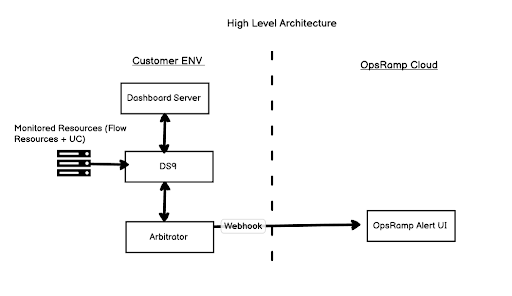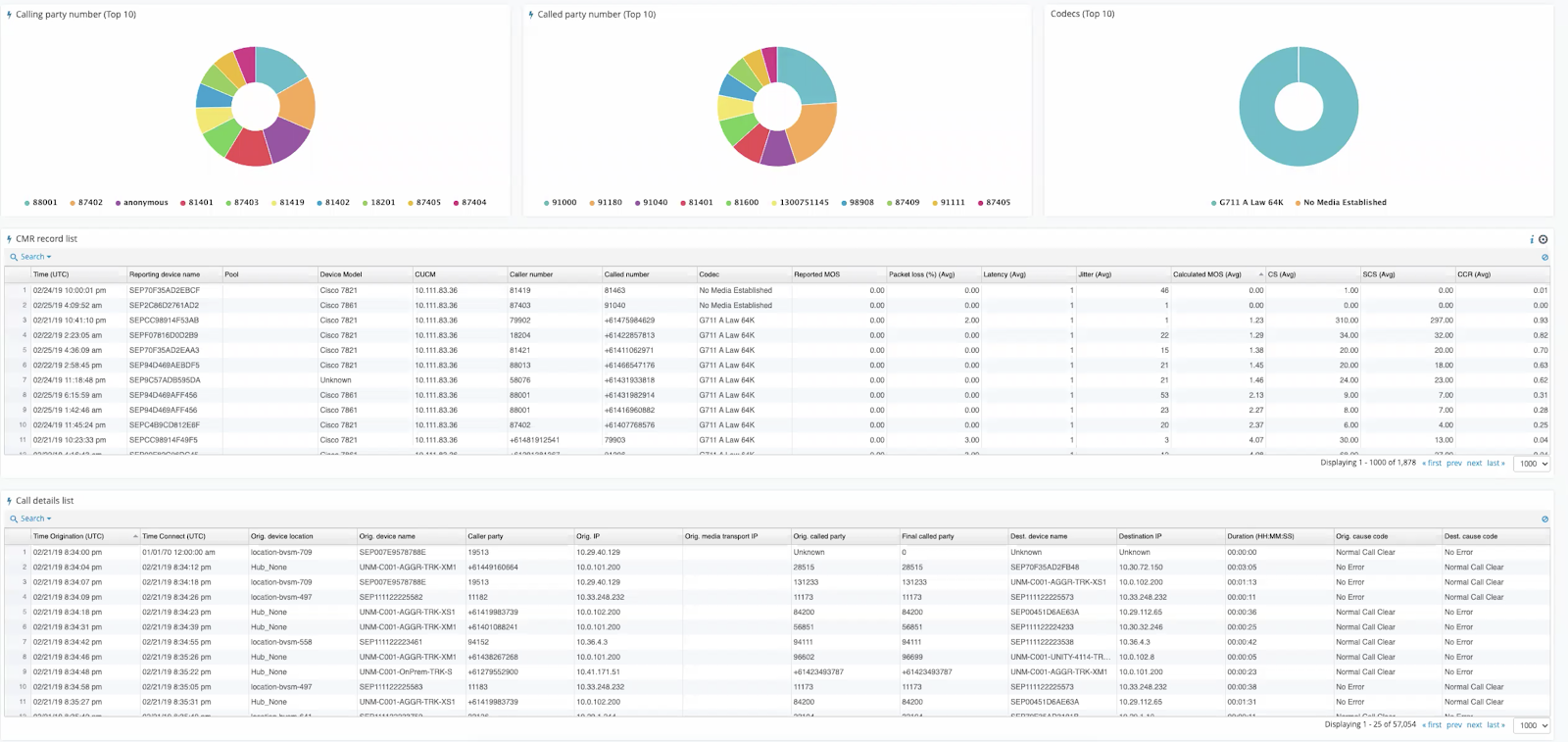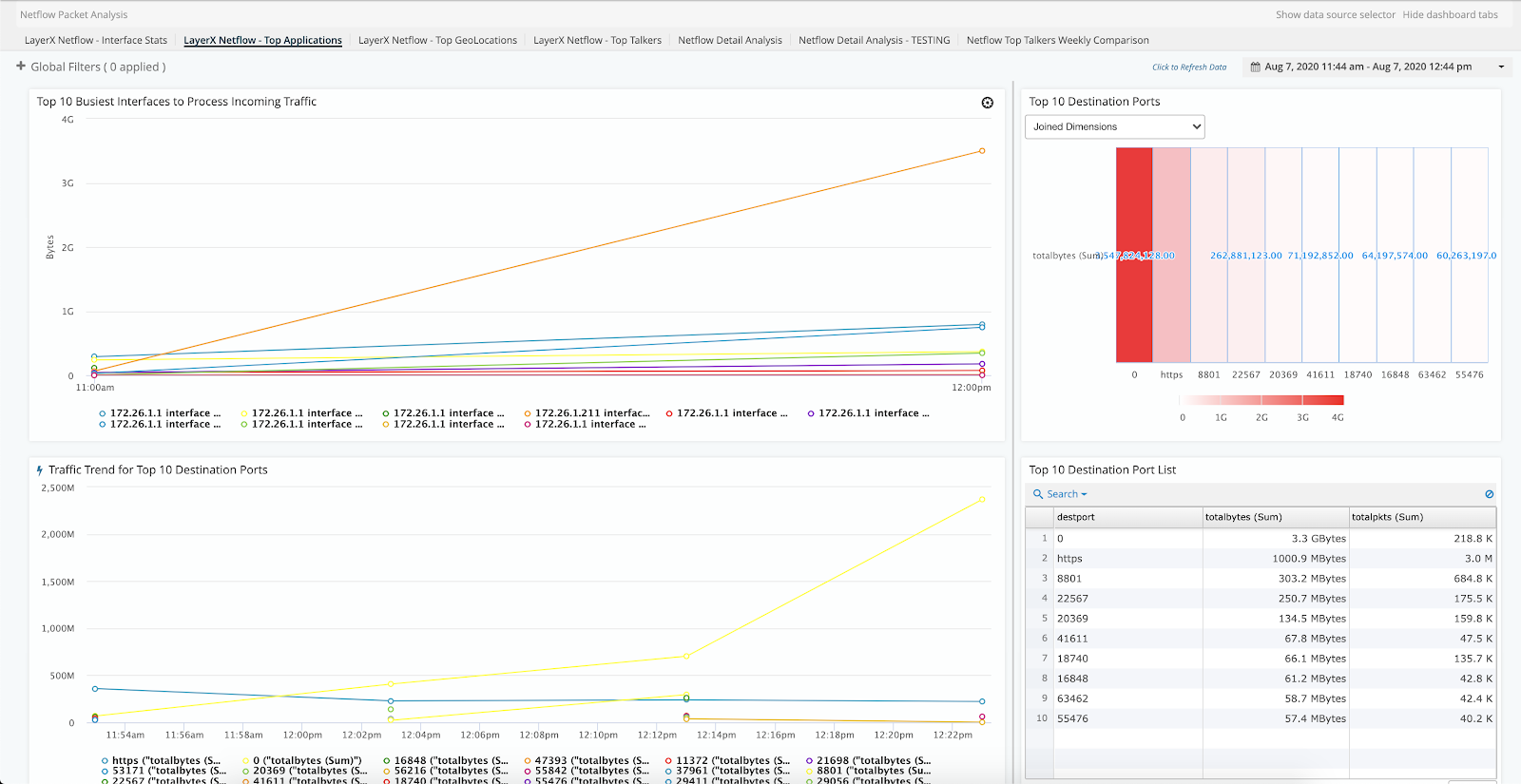The Unified Communication and Netflow monitoring is available on a trial basis, contact your Sales team for installation and configuration information.
Unified Communications and Netflow provide a dedicated network flow monitoring solution that targets enterprises and service providers who need deep network flow monitoring.
- Unified Communications: Analyzes your user communication channels.
- Netflow: Generates a data collection of your network flow.
Features include:
- A self-contained Linux OS.
- Automatic patch implementation.
- A database based on a big data architecture.
- Support for migration of all data from one service pack to another or from one release to another.
- No dependencies on other modules.
- No dependencies on matching releases of other modules.
- Scaling of the data store – vertically and horizontally. The amount of data retained is dependent On the amount of storage volume given.
- Scaling to hundreds of thousands of flows per second.
The following figure shows the high-level architecture:

Unified Communications
Unified Communication and Netflow are available on a trial basis, contact your Sales team for installation and configuration.
Unified Communications is the deep analysis of user communication channels, supporting voice. The channels collect call data from unified communication systems such as Cisco UC, Ayaya, and cloud systems such as Zoom.
Key use cases include:
- Real-time diagnosis of communications and call data to identify issues.
- Generation of alerts based on service degradations.
- Analysis of voice data for capacity planning or post-incident troubleshooting. For example, complaints of poor audio quality.
The following figure shows an implementation example:

Netflow
Netflow and Unified Communication are available on a trial basis, contact your Sales team for installation and configuration.
Netflow is a network flow data collection, which is generated by servers and network devices.
Key use cases include:
- Real-time network latency diagnosis across WAN links to identify top talkers that are impacting users or business services, including network latency associated with source, destination, protocols, and applications.
- Generation of alerts based on network traffic utilization.
- Analysis of network utilization for capacity planning or post-incident analysis.
The following figure shows an implementation example:
